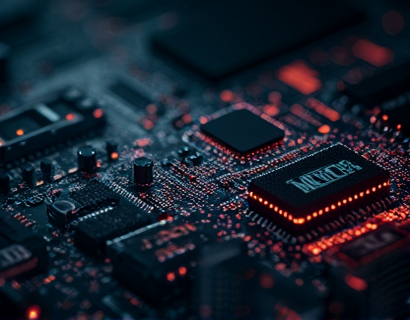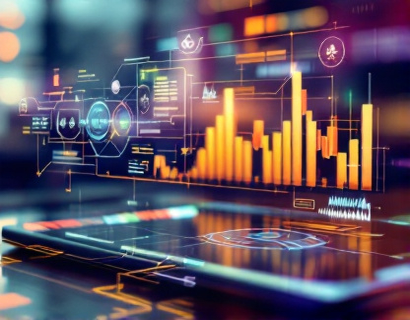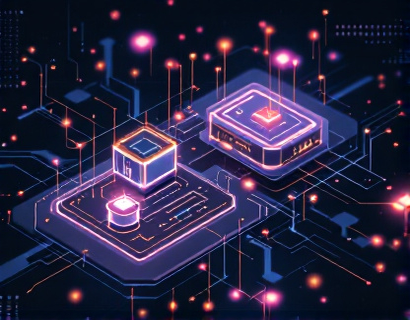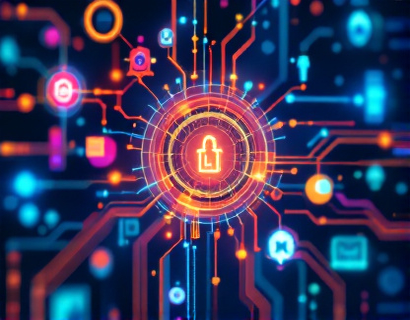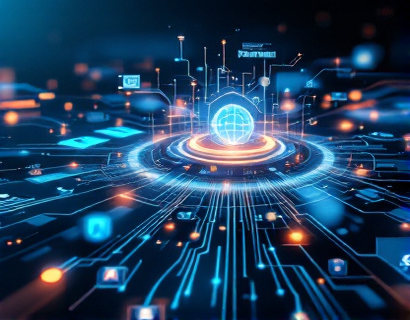Revolutionizing Digital Productivity: The Synergy of Crypto and AI
The integration of cryptocurrency and artificial intelligence is ushering in a new era of digital productivity, offering unprecedented tools and applications that are redefining efficiency and innovation. This article delves into the latest advancements where these two cutting-edge technologies converge, providing tech professionals and enthusiasts with a comprehensive guide to harnessing their potential.
The intersection of cryptocurrency and AI is not just a technological curiosity but a practical force driving significant changes in how we work, interact, and manage digital assets. As these technologies mature, their combined power is unlocking new possibilities for enhancing productivity, security, and engagement in the digital realm.
Understanding Cryptocurrency and AI
Cryptocurrency, a digital or virtual currency secured by cryptography, operates on decentralized networks like blockchain. It offers a secure, transparent, and tamper-proof way to conduct transactions without intermediaries. On the other hand, AI refers to the simulation of human intelligence processes by machines, particularly computer systems. These processes include learning, reasoning, and self-correction.
When combined, cryptocurrency and AI create a powerful synergy. AI can enhance the functionality and security of blockchain networks, while cryptocurrency can provide the necessary incentives and resources for AI systems to operate and evolve. This synergy is particularly beneficial in creating smart, autonomous, and secure digital environments.
Enhancing Security with AI and Crypto
One of the most significant benefits of integrating AI with cryptocurrency is the enhancement of security measures. AI algorithms can analyze vast amounts of data to detect patterns and anomalies, identifying potential security threats in real-time. In the context of blockchain, AI can help in monitoring transactions, spotting fraudulent activities, and ensuring the integrity of the network.
Smart contracts, self-executing contracts with the terms directly written into code, can be fortified with AI to automate and enforce contractual obligations more efficiently. AI can predict and mitigate risks, ensuring that transactions are not only secure but also compliant with regulatory standards. This dual approach significantly reduces the risk of cyber attacks and enhances overall system reliability.
Optimizing Network Performance
The performance of blockchain networks is crucial for their adoption and utility. AI can optimize various aspects of blockchain operations, from transaction processing to network consensus mechanisms. Machine learning models can predict network congestion, adjust parameters to maintain optimal performance, and even suggest improvements to the underlying protocol.
For instance, AI can help in designing more efficient consensus algorithms, reducing the computational power required for validating transactions. This not only lowers energy consumption but also speeds up transaction processing times. As a result, blockchain networks become more scalable and user-friendly, attracting a broader range of applications and users.
Automating Administrative Tasks
Administrative tasks in cryptocurrency and blockchain ecosystems are often time-consuming and prone to human error. AI can automate these tasks, streamlining operations and freeing up resources for more strategic activities. For example, AI-driven tools can manage wallet security, monitor portfolio performance, and execute trades based on predefined criteria.
Smart assets, which are digital assets with embedded AI, can perform complex tasks autonomously. These assets can adapt to market conditions, execute trades, and even provide insights to users. This level of automation not only increases efficiency but also reduces the need for constant human oversight, making the entire process more reliable and cost-effective.
Enhancing User Experience
The user experience in cryptocurrency and blockchain applications can be significantly improved through AI. Personalization is a key area where AI shines, allowing platforms to tailor experiences based on user preferences and behavior. AI can analyze user data to recommend relevant services, provide customized interfaces, and offer real-time support.
Chatbots and virtual assistants powered by AI can offer 24/7 customer support, answering queries, and guiding users through complex processes. These AI-driven interfaces are not only available around the clock but can also understand and respond to natural language, making interactions more intuitive and seamless.
Incentivizing Participation
Cryptocurrency networks rely on decentralized participation to function effectively. AI can play a crucial role in incentivizing users to contribute to the network. By analyzing user behavior and preferences, AI can design tailored incentive programs that encourage participation in activities such as mining, validating transactions, and maintaining the network's security.
Tokenomics, the study of token economics, can be enhanced with AI to create more dynamic and responsive reward systems. AI can adjust token distributions based on network needs, ensuring that incentives remain effective and motivating. This adaptive approach helps maintain a healthy and active ecosystem, fostering long-term growth and stability.
Data Analytics and Insights
Data analytics is a critical component of both cryptocurrency and AI. The combination of these technologies can unlock deep insights from vast datasets, providing valuable information for decision-making. AI algorithms can process and analyze blockchain data to identify trends, predict market movements, and optimize investment strategies.
For developers and businesses, AI-driven analytics can offer insights into user behavior, network performance, and potential areas for improvement. This data-driven approach enables more informed decisions, leading to better product development and service delivery. Additionally, AI can help in compliance monitoring, ensuring that all activities adhere to regulatory requirements.
Case Studies and Real-World Applications
Several projects and platforms are already leveraging the synergy of cryptocurrency and AI to revolutionize digital productivity. One notable example is DeFi (Decentralized Finance) platforms that use AI to enhance lending, borrowing, and trading services. These platforms can offer more accurate risk assessments, personalized loan terms, and optimized portfolio management.
Another area is NFT (Non-Fungible Token) marketplaces, where AI can authenticate and verify digital assets, ensuring their uniqueness and value. AI-driven tools can also help artists and creators by providing insights into market trends and optimizing pricing strategies.
In the realm of supply chain management, AI and blockchain combine to create transparent and efficient systems. AI can track and analyze the movement of goods, while blockchain ensures that all transactions are secure and immutable. This integration enhances traceability, reduces fraud, and improves overall supply chain efficiency.
Challenges and Considerations
While the potential of combining cryptocurrency and AI is vast, there are challenges that need to be addressed. One major concern is the regulatory landscape, as both technologies operate in areas that are still evolving in terms of legal frameworks. Ensuring compliance while innovating is crucial for sustainable growth.
Another challenge is the technical complexity involved in integrating these technologies. Developers need to possess a deep understanding of both domains to create effective and secure solutions. Education and training programs can help bridge this gap, fostering a new generation of tech professionals skilled in crypto and AI.
Scalability is also a significant issue. As the adoption of these technologies grows, systems must be able to handle increasing loads without compromising performance. Continuous research and development are necessary to overcome these technical hurdles.
Future Prospects
The future of cryptocurrency and AI integration holds immense promise. As both technologies continue to mature, we can expect even more innovative applications and tools that further enhance digital productivity. The convergence of these fields is likely to lead to the development of more autonomous, secure, and efficient systems.
One exciting prospect is the emergence of AI-powered decentralized autonomous organizations (DAOs). These organizations can leverage AI to make collective decisions, manage resources, and execute strategies without central authority. The potential for decentralized governance and community-driven initiatives is vast, offering a new paradigm for digital collaboration and innovation.
Moreover, the integration of AI with other emerging technologies like quantum computing and the Internet of Things (IoT) could lead to breakthroughs that we can only begin to imagine. The possibilities are endless, and the journey to realize them is just beginning.




